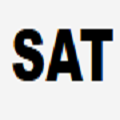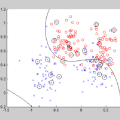This study presents a novel approach to bone age assessment (BAA) using a multi-view, multi-task classification model based on the Sauvegrain method. A straightforward solution to automating the Sauvegrain method, which assesses a maturity score for each landmark in the elbow and predicts the bone age, is to train classifiers independently to score each region of interest (RoI), but this approach limits the accessible information to local morphologies and increases computational costs. As a result, this work proposes a self-accumulative vision transformer (SAT) that mitigates anisotropic behavior, which usually occurs in multi-view, multi-task problems and limits the effectiveness of a vision transformer, by applying token replay and regional attention bias. A number of experiments show that SAT successfully exploits the relationships between landmarks and learns global morphological features, resulting in a mean absolute error of BAA that is 0.11 lower than that of the previous work. Additionally, the proposed SAT has four times reduced parameters than an ensemble of individual classifiers of the previous work. Lastly, this work also provides informative implications for clinical practice, improving the accuracy and efficiency of BAA in diagnosing abnormal growth in adolescents.
翻译:本研究提出了一种基于Sauvegrain方法的多视角、多任务分类模型的新方法来评估骨龄(BAA)。 Sauvegrain方法自动评估每个肘部标志的成熟度得分并预测骨龄。独立地训练分类器来对感兴趣区域(RoI)的每个区域进行评分是一种解决方案,但此方法限制了可访问的信息仅局限于局部形态,并增加了计算成本。因此,本项工作提出了一种自累积视觉转换器(SAT),通过应用记忆令牌和区域注意偏差来减轻多视角、多任务问题中通常出现的各向异性行为,并限制了视觉转换器的效果。许多实验表明,SAT成功利用了标志之间的关系并学习了全局形态特征,使BAA的平均绝对误差低于先前工作的0.11。此外,所提出的SAT的参数比先前工作的单独分类器集成少四倍。最后,本研究还提供了对临床实践的有益启示,提高了对青少年异常生长的BAA诊断的准确性和效率。



